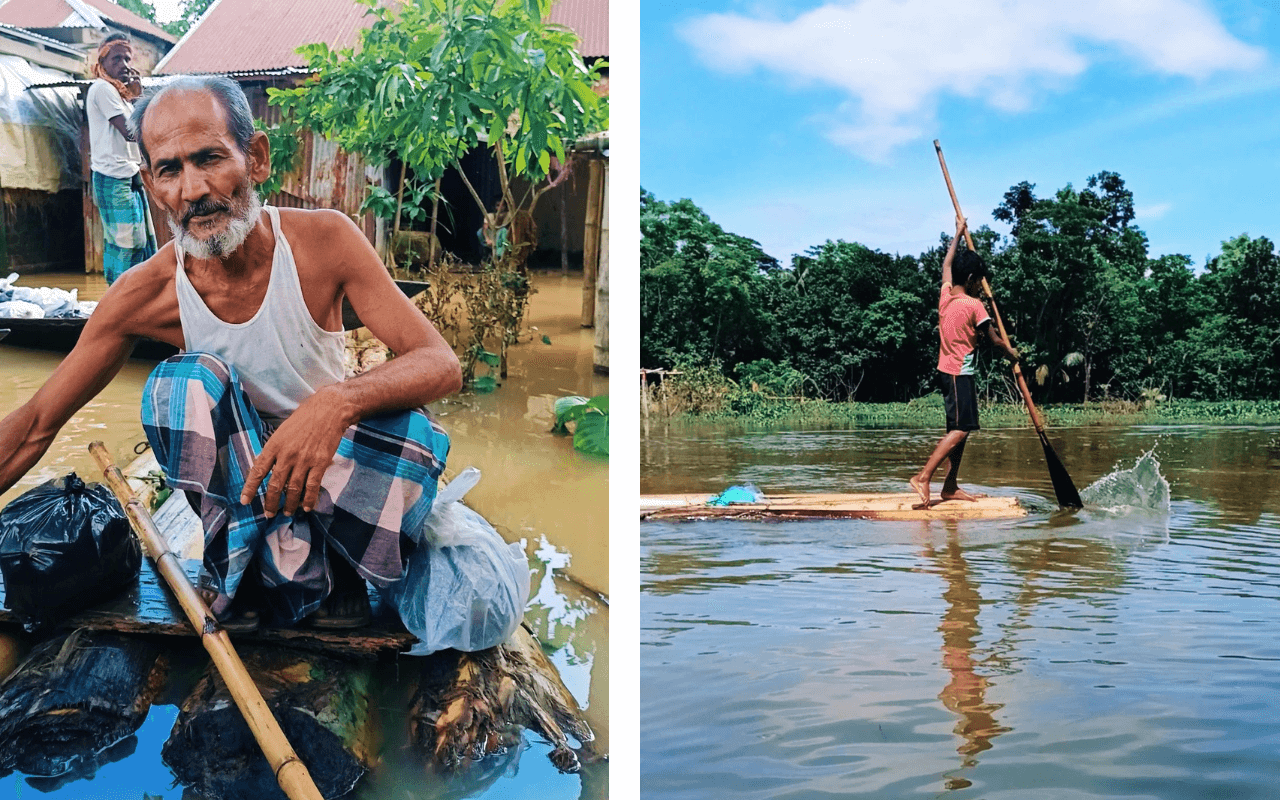Since May 2022, Bangladesh has been hit with one of the worst floods in years, with millions in Sylhet and Sunamganj now homeless and without any belongings. Moreover, according to the European Centre for Medium-Range Weather Forecasts (ECMW), there will be nearly 500 to 600 millimetres of rainfall in Cherrapunji, an upstream region of India situated near the northeast part of Bangladesh. The region recorded 972 millimetres of rainfall, the highest in 122 years, and 2500 millimetres, the highest in 100 years.
Situation Report:
In the last few weeks, millions of people in the Sylhet and Sunamganj districts have experienced heavy rains and flash floods, leaving them homeless and without possessions. With homes crushed, objects floating away and people missing, the country is at high alert. This is not the first time the northeastern region (Sylhet) of Bangladesh is experiencing these floods, which have occurred twice already in 2022 alone. Now, they have begun again, starting in May 2022 with heavy rains battering the area, rivers overflowing, and excess water sweeping through the region. Since 17th June, the situation has dramatically worsened and affected additional districts, increasing the magnitude and scale of damage. Around a quarter of the country is now flooded.
More than 4.3 million people are impacted by the sudden flash flood and water congestion (WHO). Meanwhile, millions have been marooned, more than 9 million are homeless, and displaced women and girls are now particularly vulnerable whilst they shelter out in the open or in unfamiliar locations. Many communities also face the added challenge of a total lack of electricity, meaning they are then unable to keep in contact with family members and friends to ensure their safety.

Health & Environmental Impacts
As of 20 June, there have been thousands of recorded cases of diseases and injuries, including Acute Watery Diarrhoea (AWD) - which accounts for 75% of cases - skin, respiratory and eye infections, and drowning. One of the most serious concerns also includes the possibility of additional disease outbreaks as the water recedes (WHO 2022). The World Health Organisation is currently providing drugs and supplies in the worst affected areas, as well as discussing a coordinated preparedness and response to reduce death and disease, with emphasis placed on managing drowning and snake bites - the two main causes of mortality and morbidity during floods.
In addition, 75,000 hectares of paddy and 300,00 hectares of other crops - including maize and vegetables critical to the population’s nutrition - have been damaged. More areas are susceptible to being destroyed as flooding spreads into new areas. To understand the sheer scale, one hectare is the equivalent of 2.47 football fields.
What Are We Doing to Help?
Doctors Worldwide is currently working to provide a floating medical boat in a number of key areas starting with Beanibazar and Boroleka Upazila (administrative areas) after which we will expand into the other Upazilas. These areas have not received as much support from private, public and government agencies as Sylhet city and the Sunamganj district. The medical boat will travel to shelters and marooned families to treat sick patients who currently do not have access to medical care.
The flood situation in these and other upazilas are predicted to worsen with weather forecasts showing further rains this week and next week that may re-flood other areas that are starting to go down. Around 60-70% of these Upazilas went underwater as the river Kushiara kept rising, with local administrations struggling to cope with the ongoing problem and to provide support for the community.
As the health crisis continues to unfold, DWW is working to help ease the impact of the floods, including:
- Rapid Training for local Bangladeshi medics and healthcare workers on treatment and management of flood-related conditions, health promotion, referral mechanisms & surveillance [advert below, register here]


- Healthcare coordination with local government to support affected communities
- Identification of the most remote and vulnerable places where aid and other service are inadequate
- Utilising the medic boat for emergency referrals such as mothers in labour including a hotline
- Ongoing assessment on the impact of the flood on healthcare in the area including community clinics/healthcare facilities and exploration of areas where strengthened healthcare services are needed
- Supporting surveillance activities to identify potential disease outbreaks
If you would like to help with our medical response activities in Bangladesh, please donate to our Life Saving Fund today. To keep up to date with our projects, make sure to share this article with your friends and family, follow us on social media (twitter, facebook, instagram, linkedin) and subscribe to our mailing list below for regular updates and campaigns.
DONATE NOW: LIFE SAVING FUND
Further Reading / References:
https://en.wikipedia.org/wiki/2022_Sylhet_floods
https://www.bbc.com/news/world-asia-india-61670666


